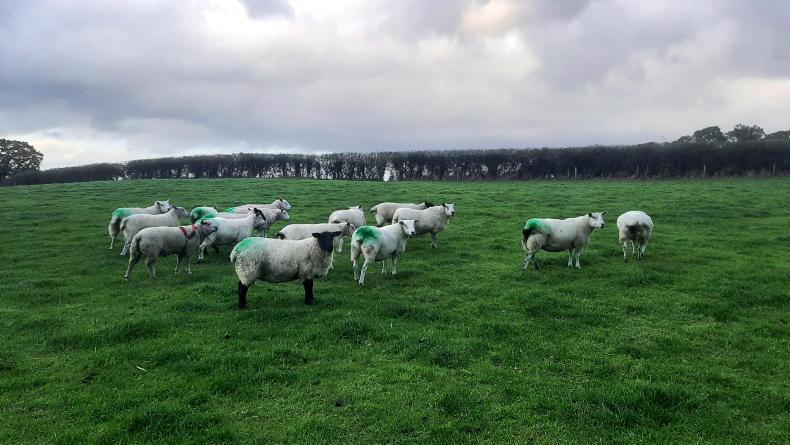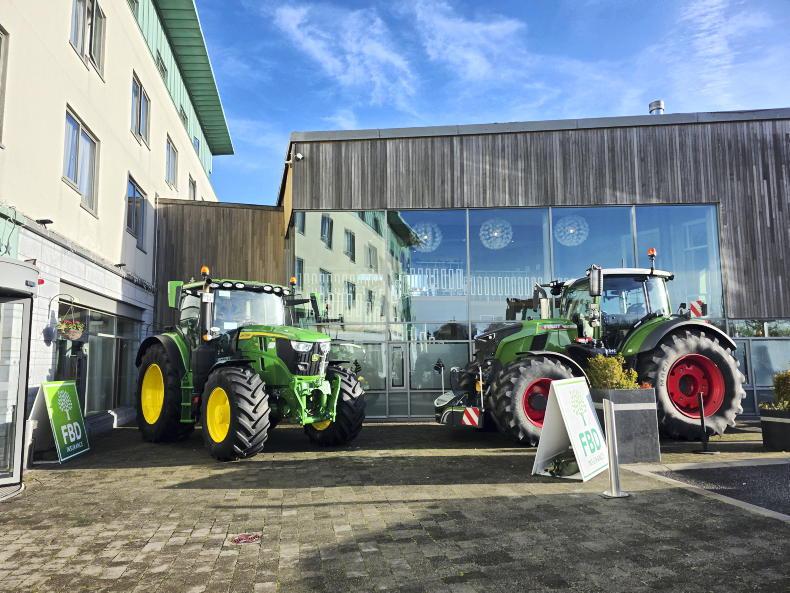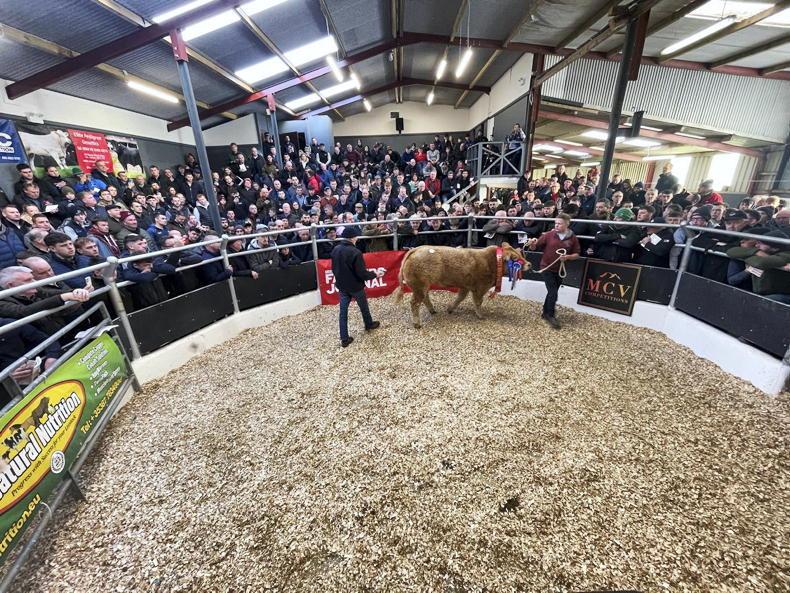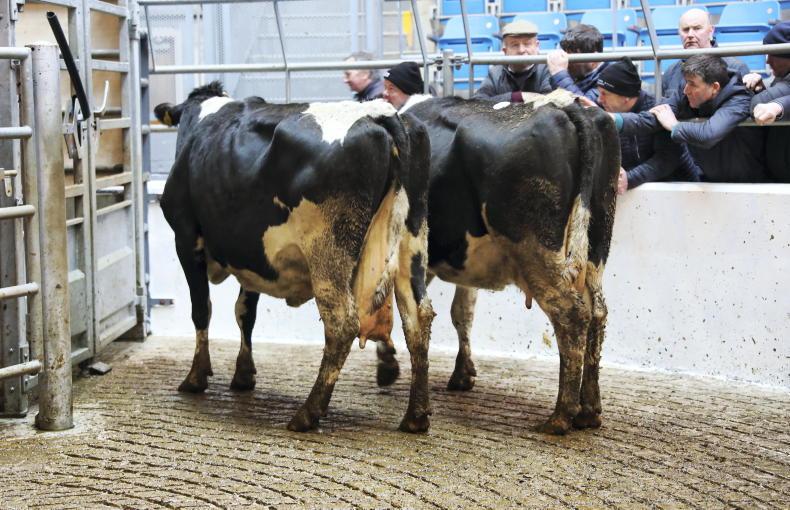The cost of keeping the cow over the course of the year is the biggest expense within every suckler herd.
However, few farmers know what it costs their business to maintain a herd of suckler cows year on year.
Running costs will vary depending on certain factors, such land type, housing system, overheads, machinery finance etc.
The type of suckler system is another factor and will determine the level of inputs purchased annually.
By taking the time to work out the cost of keeping cows, it is then possible to target areas that are underperforming or where there is an over spend or no return on investment.
All too often, when running costs rise, the knee jerk reaction sees inputs like meal and fertiliser being drastically reduced.
However, these inputs may not be the issue. Instead, factors like excessive mortality levels, poor weight gain, low output or over-mechanisation are hindering profitability.
Benchmarking the farm will flag up such trends, but the information is meaningless unless there is remedial action taken.
Example herd
To give an example of calculating production costs, take a suckler farmer running 60 spring calving suckler cows with the assumption that high levels of herd management are in place at all times.
Cows are calved over a 12 week period from early February to late April.
To keep things simple, the farmer operates a weanling system whereby the majority of calves are sold live in October.
As not all calves will reach an adequate sale weight by autumn, 15 calves are held and housed for 90 days to increase liveweight. These animals are then sold as yearlings in early spring.
Again, to keep the system simple, the farmer operates an “all-in, all out” system with all calves sired by bulls with terminal traits.
Replacements are sourced with the purchase of eight in-calf heifers each year from the same herd specialising in this market.
All land being farmed is owned, laid out in grass with soils being productive and free draining. Cattle typically graze from early to mid-April up to late October most years.
Fixed costs are factored in to the calculations to cover insurance, machinery operating costs, building repairs etc and valued at 125p/day, which comes to £456/cow annually.
Stage one:
calving to turnout
As cows calve in a compact block from February to April, the average birth date for the 2025 calf crop is 1 March to reflect 80% of animals born in the first six weeks of calving.
Fresh calved cows remain housed until turnout, which begins in a gradual manner around 10 April as weather and ground conditions permit.
Based on an average 1 March calf birth date, it means the average cow is housed for 40 days from calving to turnout.
During this time, silage costing £25/t is fed at a rate of 50kg/day along with 2kg/day of a general purpose ration costing £275/t. Combining both brings feed costs to £72/cow.
One round bale of straw per cow is factored in for calving pens and creep areas and at a cost of £35/cow.
Miscellaneous costs for items like calving aids, ear tags, minerals are included at £30/cow.
Fixed costs at 125p/day come to £50/cow, bringing production costs for the outlined 40-day period to £187/cow.
Grazing season
In a normal year, the grazing season runs from 10 April up to 20 October with cows housed as calves are sold off mid-October at special weanling sales.
As grazing ground is productive and free draining, and cows are a moderate 700kg liveweight, stocking rate is set around one cow and calf per acre on 60 acres.
To aid management and maximise grass growth, cows are grazed in a rotational paddock system during spring and summer.
Silage ground comes into the grazing area from late summer onwards, providing extra land to carry cows as growth rates tail off and cattle intakes increase
CAN is purchased, to supplement P and K supplied by a spring slurry application, with four bags per acre applied to grazing.
At a cost of £310/t, this works out at a cost of £62 per cow.
Silage is made in a two cut system with 50 acres harvested in early to mid-June, followed by 30 acres in mid-August with the other 20 acres used to support grazing from mid-summer onwards.
First cut fertiliser uses three bags/acre of 25-5-5 for both cuts, which is 7.5t at £360/t or £52/acre. Second cut silage uses the same rate or 4.5t.
One bag per acre of CAN is applied to silage ground coming into the grazing rotation, with the 35 acres used for late season grazing, bringing total fertiliser purchased to 26.5t.
Silage contractor charges cost £100/acre.
Owned machinery is costed in at £5/acre for silage fertiliser application, £5/acre for rolling, £20/acre for sprays and £40/acre for slurry
spreading.
Taking a first cut yield averaging 8t/acre and 5t/acre in second cut, silage harvested is around 550t and works out at a cost of £25/t.
Around 10 acres of new grass is reseeded annually, costing £300/acre or £50/cow across the breeding herd.
To drive weight gain and prep calves for sale, 3kg/day of concentrate is fed 60 days prior to selling, which at £275/t costs £50/head.
Vet and medicine costs of £25 and miscellaneous costs of £50/cow covers items like mineral licks, electric fencing materials, etc.
Eight in-calf heifers are purchased at £2,200/head, replacing culls valued at £1,900 for well-fleshed continental type animals.
Spread over the full breeding herd, replacements cost £40/head.
The herd runs two terminal stock bulls, each costing £4,000 and kept five years before culling at £2,000.
Assuming a £400/head annual maintenance cost, running two bulls costs £26/cow annually.
Fixed costs from 10 April to 20 October come to £256/cow, bringing total costs for the grazing season to £559/cow.
Winter housing
As calves are sold, cows are housed and dried off over 10 days on low quality silage made from shot grass in mid-summer.
The main winter feeding period runs from 1 November to 28 February, bringing cows back round to the average calf birth date. Over winter, cows are maintained on 35kg/day of average quality silage.
The 15 lightest calves are housed on 20 October for 90 days to increase weight. Once weaned, they are fed 20kg/day of silage and 3kg/day of concentrate for a 90 day period.
Dosing and routine health treatments cost £25/cow with a similar charge for miscellaneous costs such as pregnancy scanning, foot trimming etc. Fixed costs of £150/cow are included, bringing wintering costs to £335/cow.
Farmers need to generate an average sale price in excess of £1,086 per calf sold to generate a profit
Based on the outlined inputs, the average cost of keeping a cow on the example farm comes to £1,086/head as shown in Table 1.
However, it must be stressed that the example is based on an intensive suckler herd under high levels of management.
There will be plenty of suckler farms managed on a much more extensive system with lower input requirements, but in such scenarios, output will also be lower.
There will also be farms with higher costs due to longer winters or certain financial constraints. The main point is for farmers to get a handle on running costs for their own herd.
There will always be mortality on farm, but the example is assuming that any calf death is offset by cross-fostering a twin, or culling the cow if this option is not available.
Ultimately, the example farmer needs to generate an average sale price in excess of £1,086 per calf sold to make a profit.
In recent years, weanling prices have been exceptionally strong for certain breeds, especially within a weight range of 350kg to 400kg. Therefore, with the right calf, it is possible the example farmer can cover the cost of keeping cows and generate a margin.
That said, even a margin of £300/cow, which would be on par with some of the most efficient herds in NI, only generates a total income of £18,000 - well below the average salary.
This highlights that sucklers, even under efficient management and in a buoyant market, are dependent on subsidies or other income streams to remain operational.
Read more
Is protected urea a runner in 2025?
Selling live or finish out of the shed? Doing up the sums
The cost of keeping the cow over the course of the year is the biggest expense within every suckler herd.
However, few farmers know what it costs their business to maintain a herd of suckler cows year on year.
Running costs will vary depending on certain factors, such land type, housing system, overheads, machinery finance etc.
The type of suckler system is another factor and will determine the level of inputs purchased annually.
By taking the time to work out the cost of keeping cows, it is then possible to target areas that are underperforming or where there is an over spend or no return on investment.
All too often, when running costs rise, the knee jerk reaction sees inputs like meal and fertiliser being drastically reduced.
However, these inputs may not be the issue. Instead, factors like excessive mortality levels, poor weight gain, low output or over-mechanisation are hindering profitability.
Benchmarking the farm will flag up such trends, but the information is meaningless unless there is remedial action taken.
Example herd
To give an example of calculating production costs, take a suckler farmer running 60 spring calving suckler cows with the assumption that high levels of herd management are in place at all times.
Cows are calved over a 12 week period from early February to late April.
To keep things simple, the farmer operates a weanling system whereby the majority of calves are sold live in October.
As not all calves will reach an adequate sale weight by autumn, 15 calves are held and housed for 90 days to increase liveweight. These animals are then sold as yearlings in early spring.
Again, to keep the system simple, the farmer operates an “all-in, all out” system with all calves sired by bulls with terminal traits.
Replacements are sourced with the purchase of eight in-calf heifers each year from the same herd specialising in this market.
All land being farmed is owned, laid out in grass with soils being productive and free draining. Cattle typically graze from early to mid-April up to late October most years.
Fixed costs are factored in to the calculations to cover insurance, machinery operating costs, building repairs etc and valued at 125p/day, which comes to £456/cow annually.
Stage one:
calving to turnout
As cows calve in a compact block from February to April, the average birth date for the 2025 calf crop is 1 March to reflect 80% of animals born in the first six weeks of calving.
Fresh calved cows remain housed until turnout, which begins in a gradual manner around 10 April as weather and ground conditions permit.
Based on an average 1 March calf birth date, it means the average cow is housed for 40 days from calving to turnout.
During this time, silage costing £25/t is fed at a rate of 50kg/day along with 2kg/day of a general purpose ration costing £275/t. Combining both brings feed costs to £72/cow.
One round bale of straw per cow is factored in for calving pens and creep areas and at a cost of £35/cow.
Miscellaneous costs for items like calving aids, ear tags, minerals are included at £30/cow.
Fixed costs at 125p/day come to £50/cow, bringing production costs for the outlined 40-day period to £187/cow.
Grazing season
In a normal year, the grazing season runs from 10 April up to 20 October with cows housed as calves are sold off mid-October at special weanling sales.
As grazing ground is productive and free draining, and cows are a moderate 700kg liveweight, stocking rate is set around one cow and calf per acre on 60 acres.
To aid management and maximise grass growth, cows are grazed in a rotational paddock system during spring and summer.
Silage ground comes into the grazing area from late summer onwards, providing extra land to carry cows as growth rates tail off and cattle intakes increase
CAN is purchased, to supplement P and K supplied by a spring slurry application, with four bags per acre applied to grazing.
At a cost of £310/t, this works out at a cost of £62 per cow.
Silage is made in a two cut system with 50 acres harvested in early to mid-June, followed by 30 acres in mid-August with the other 20 acres used to support grazing from mid-summer onwards.
First cut fertiliser uses three bags/acre of 25-5-5 for both cuts, which is 7.5t at £360/t or £52/acre. Second cut silage uses the same rate or 4.5t.
One bag per acre of CAN is applied to silage ground coming into the grazing rotation, with the 35 acres used for late season grazing, bringing total fertiliser purchased to 26.5t.
Silage contractor charges cost £100/acre.
Owned machinery is costed in at £5/acre for silage fertiliser application, £5/acre for rolling, £20/acre for sprays and £40/acre for slurry
spreading.
Taking a first cut yield averaging 8t/acre and 5t/acre in second cut, silage harvested is around 550t and works out at a cost of £25/t.
Around 10 acres of new grass is reseeded annually, costing £300/acre or £50/cow across the breeding herd.
To drive weight gain and prep calves for sale, 3kg/day of concentrate is fed 60 days prior to selling, which at £275/t costs £50/head.
Vet and medicine costs of £25 and miscellaneous costs of £50/cow covers items like mineral licks, electric fencing materials, etc.
Eight in-calf heifers are purchased at £2,200/head, replacing culls valued at £1,900 for well-fleshed continental type animals.
Spread over the full breeding herd, replacements cost £40/head.
The herd runs two terminal stock bulls, each costing £4,000 and kept five years before culling at £2,000.
Assuming a £400/head annual maintenance cost, running two bulls costs £26/cow annually.
Fixed costs from 10 April to 20 October come to £256/cow, bringing total costs for the grazing season to £559/cow.
Winter housing
As calves are sold, cows are housed and dried off over 10 days on low quality silage made from shot grass in mid-summer.
The main winter feeding period runs from 1 November to 28 February, bringing cows back round to the average calf birth date. Over winter, cows are maintained on 35kg/day of average quality silage.
The 15 lightest calves are housed on 20 October for 90 days to increase weight. Once weaned, they are fed 20kg/day of silage and 3kg/day of concentrate for a 90 day period.
Dosing and routine health treatments cost £25/cow with a similar charge for miscellaneous costs such as pregnancy scanning, foot trimming etc. Fixed costs of £150/cow are included, bringing wintering costs to £335/cow.
Farmers need to generate an average sale price in excess of £1,086 per calf sold to generate a profit
Based on the outlined inputs, the average cost of keeping a cow on the example farm comes to £1,086/head as shown in Table 1.
However, it must be stressed that the example is based on an intensive suckler herd under high levels of management.
There will be plenty of suckler farms managed on a much more extensive system with lower input requirements, but in such scenarios, output will also be lower.
There will also be farms with higher costs due to longer winters or certain financial constraints. The main point is for farmers to get a handle on running costs for their own herd.
There will always be mortality on farm, but the example is assuming that any calf death is offset by cross-fostering a twin, or culling the cow if this option is not available.
Ultimately, the example farmer needs to generate an average sale price in excess of £1,086 per calf sold to make a profit.
In recent years, weanling prices have been exceptionally strong for certain breeds, especially within a weight range of 350kg to 400kg. Therefore, with the right calf, it is possible the example farmer can cover the cost of keeping cows and generate a margin.
That said, even a margin of £300/cow, which would be on par with some of the most efficient herds in NI, only generates a total income of £18,000 - well below the average salary.
This highlights that sucklers, even under efficient management and in a buoyant market, are dependent on subsidies or other income streams to remain operational.
Read more
Is protected urea a runner in 2025?
Selling live or finish out of the shed? Doing up the sums










SHARING OPTIONS